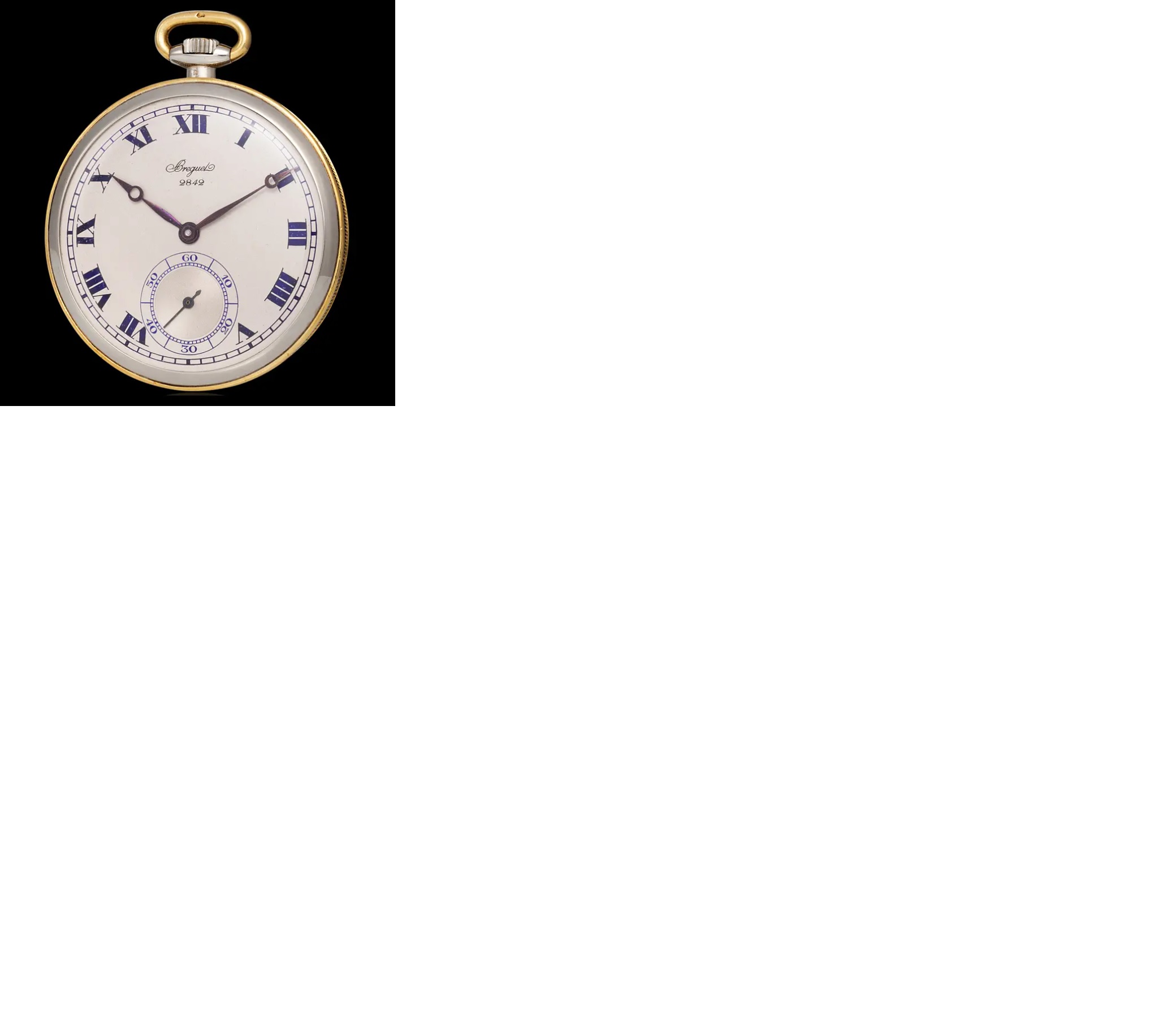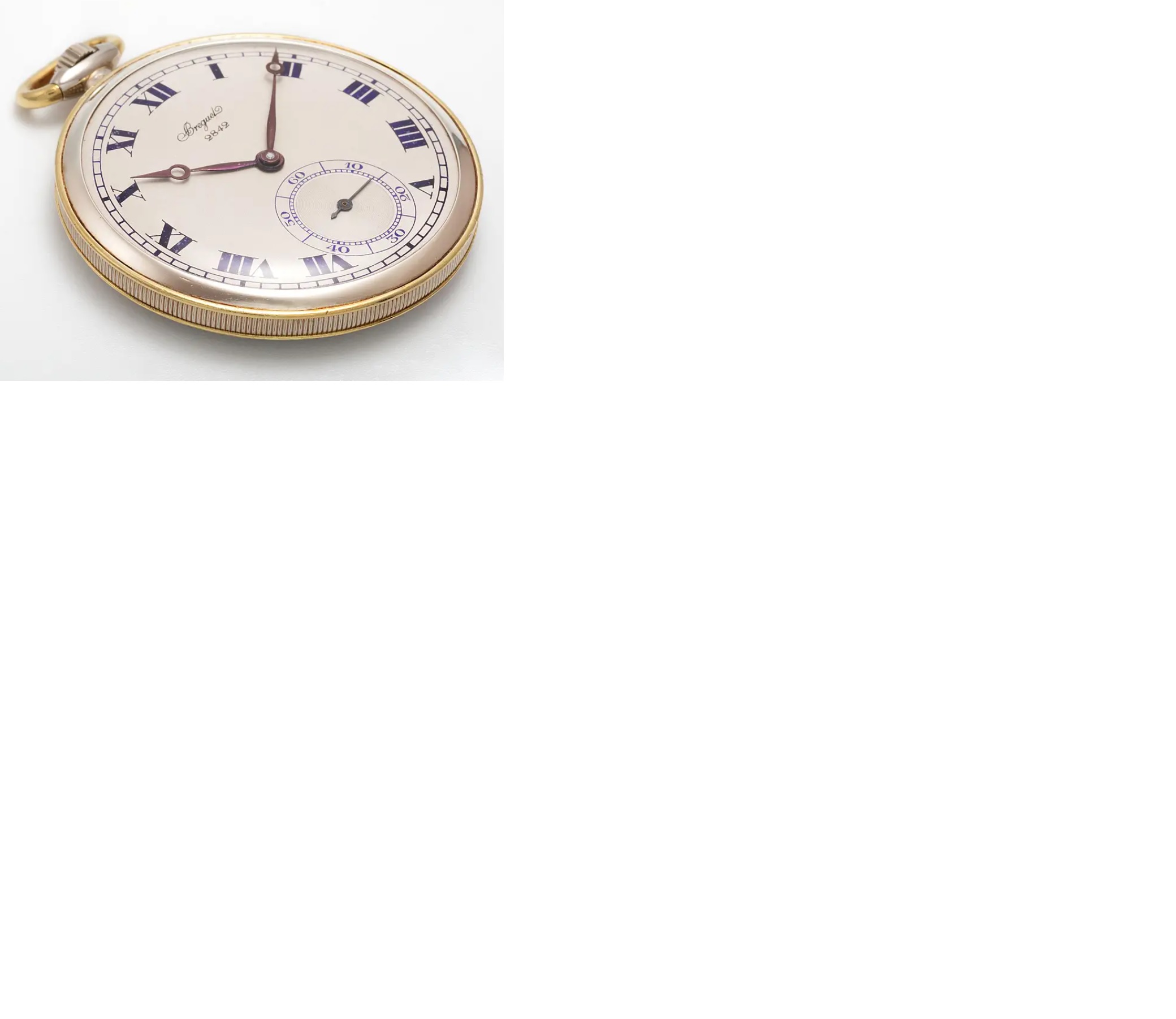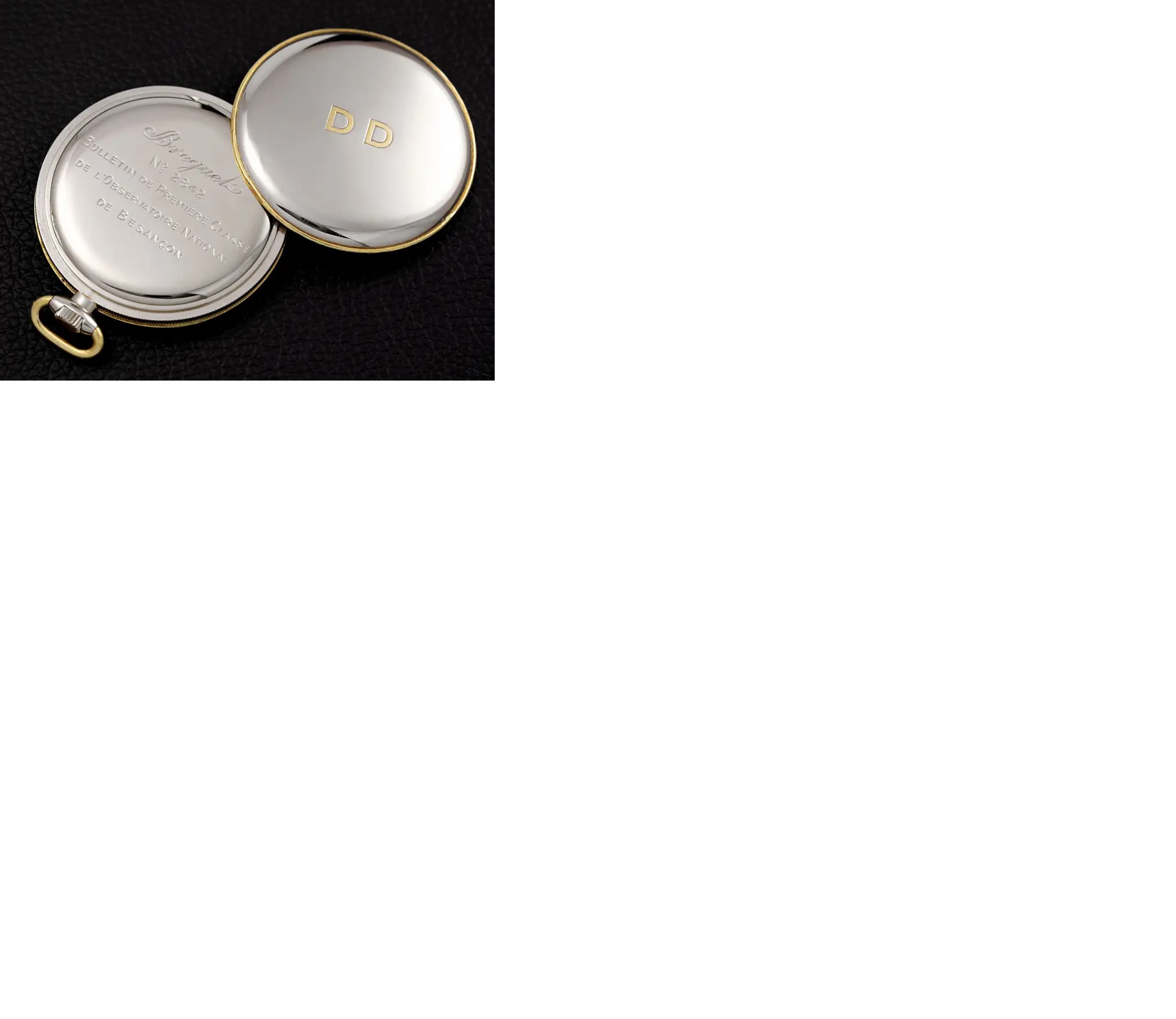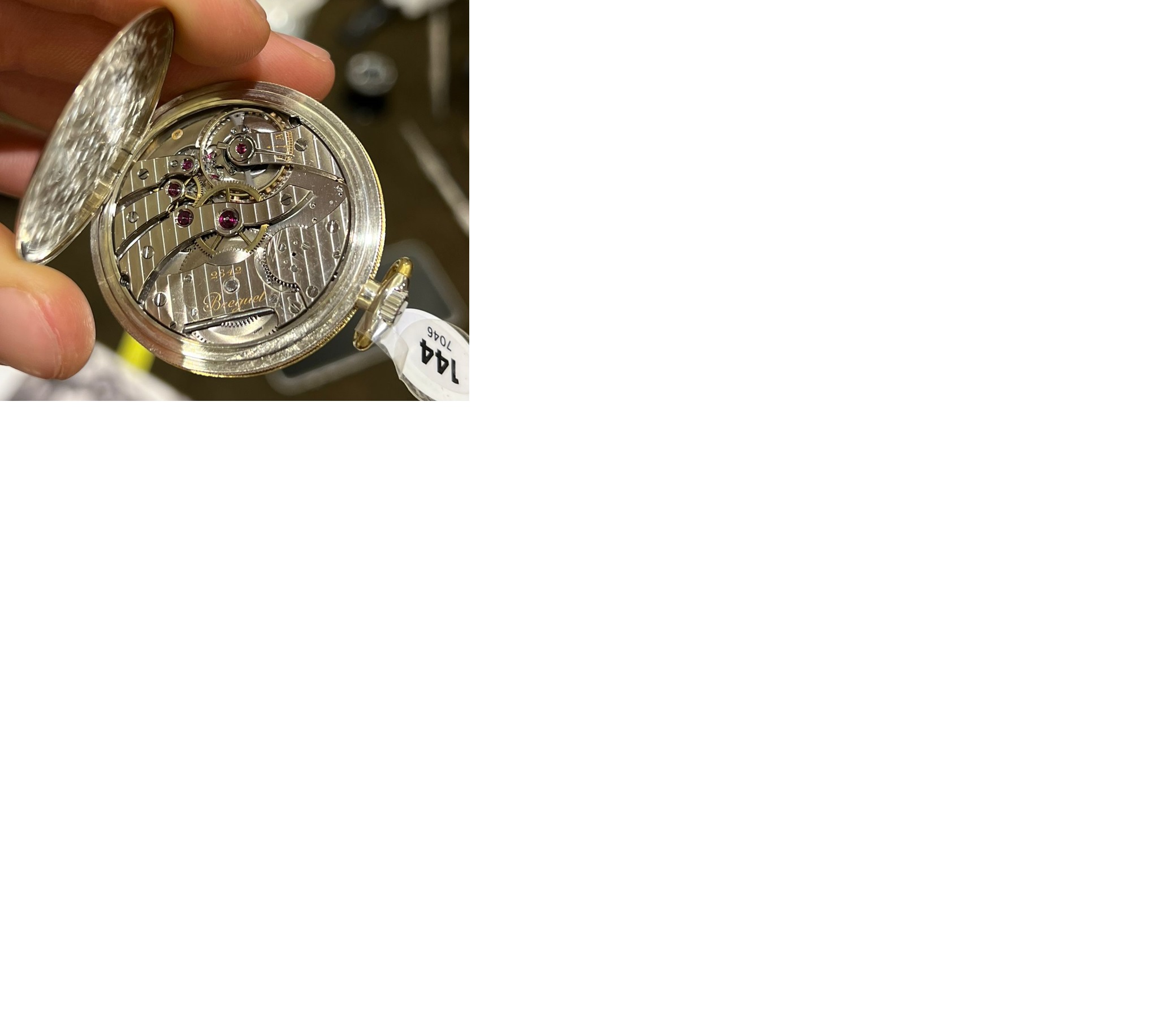Case: 18k yellow and white gold
Dial: silvered dial, signed Breguet, No. 2842, Roman numbers
Movement: cal. 17 ligne, signed Breguet, No. 2842, finished by Niton, ebauche by Frederic Piguet, successor Fils de Louis Elisee Piguet
Provenance:
1935 - Niton, Geneve
2023 - Monaco Legend Auctions, Monaco
Monaco Legend Auctions, Monaco, Exclusive Timepieces, 21 – 22 October 2023 | Monaco
Lot 144 Breguet Very Elegant and Timeless, Open Face Pocket Watch in White and Yellow Gold, Blue Roman numbers Dial, With the Observatoire National de Besançon Engraving.
Model: Pocket Watch
Case Material: Yellow and White Gold
Year: 1935
Movement: Manual
Case N°: 2842
Movement N°: 2842
Dimensions: 44 mm
Signed: Dial, Movement and Case
Breguet brand’s history spans four centuries and is so rich of inventions and innovations that represents an essential part of the entire history of watchmaking. It was 1775 when Abraham Louis Breguet founded in Paris the watch manufacture Montres Breguet S.A. After having created and patented numerous extremely fascinating complications and pocket watches, still very much sought after by collectors, it was he who led the way of what would have been the new trends, creating the first real wristwatch of the history between 1810 and 1812. For its unmistakable design and style, Breguet was able to carve out a privileged position in perpetuity in the hearts, wrists and pockets of timepiece lovers and when in 1987 the company was bought by the giant Investcorp, transferring the production to Switzerland and precisely in the Vallée de Joux, it was evident that the will was to expand its businesses also to the new Asian and American markets. This lot is an extremely fascinating pocket watch with its circular case made in yellow and white gold with inclined rounded bezel and snap-on back in still very appealing conditions. The silvered dial presents extremely rare painted blue Roman numerals, subsidiary second at 6 o’clock and blued Breguet hands. On the inner case back, is engraved “Bulletin de Premiere Classe de l’Observatoire National de Besançon” and the movement as well is stamped with the “Viper’s Head”, the symbol used by the Besançon Observatory to mark movements which had successfully passed the chronometer tests. Observatory contests were the ultimate tests in high precision watchmaking or chronometry. The testing process lasted typically 45 days, a movement was tested in 5 positions and 2 temperatures, in 10 series of 4 or 5 days each. The tolerances for errors were much stricter than any other standard, including the modern standard. Movements which passed the stringent tests were called Observatory Chronometer and issued a Bulletin de Marche or Rating Certificate, stating the testing criteria and the actual performance.
https://www.monacolegendauctions.com/auction/exclusive-timepieces-32/lot-144
|




|

